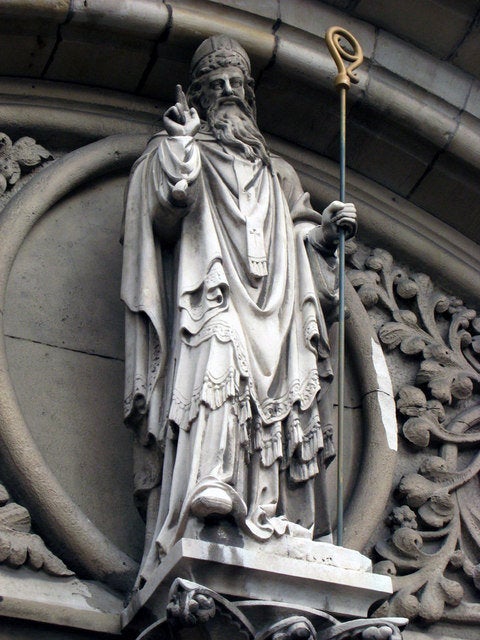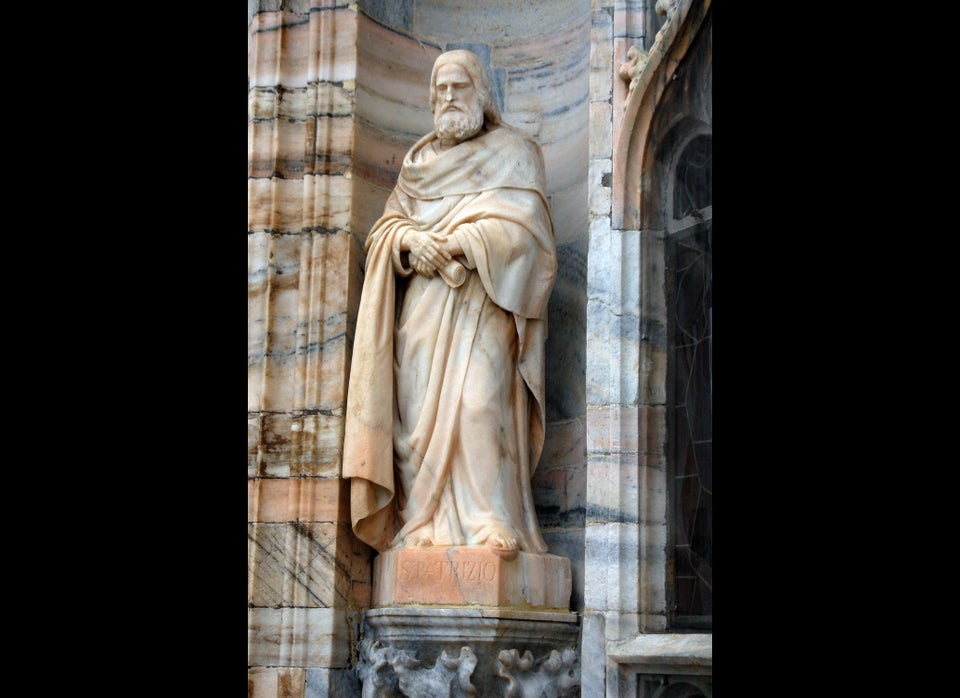
What do we know about Saint Patrick? Well, we know what he tells us:
"I am Patrick, a sinner, the most unschooled and least of all the faithful, and utterly despised by many."
When Patrick wrote those first words of his Confession -- his spiritual biography, penned some 16 centuries ago -- he was an elderly, experienced evangelist (think Billy Graham) under fire from the Catholic Church hierarchy in his native Britain (come to think of it, think Billy Graham).
His words were meant to teach, more than to unburden or defend himself. His was not an age of therapeutic self-revelation or celebrity tell-all. In his story we can find ourselves, in all the burdens and complexities of relationships, responsibilities, mental and spiritual fatigue. He can teach us how to face everyday problems with humility.
Patrick began life as the son of a landed family in far western Britain. His father was a Roman citizen and he was given a Roman name. Young Patrick, though, was not one to remain within the boundaries of the village nor to spend much time on his studies -- or his religious obligations. Later in life, because he had so little formal education, he would be considered a rustic, a rube, by contemporaries.
He was alienated from that family when he was kidnapped by Irish raiders and taken as a captive to Ireland and made a slave. Some six years later he escaped bondage in an adventure story that rivals any in literature. He also attributed his escape -- and later, his return as a missionary -- to voices and miracles, a divine hand.
During six years of hard servitude in northern Ireland, he was a literal shepherd (or perhaps cowherd), imbibing the beauty of the countryside and becoming intoxicated with the presence of God that he felt in the natural surroundings and in the hearts of the people he met. The connection Patrick felt -- and eventually embodied -- between the natural beauty of the land and the open, loving and generous hearts of its people, was the beginning of his journey to becoming not merely a Christian preacher in Ireland, but its apostle and patron saint.
Ireland and the Irish put Patrick in his place. He risked his life on a dangerous mission to convert the pagans to a new, foreign religion. He knew he needed help, crediting the Almighty with opening his heart, mind and senses to the truth of his often life-threatening situation and guiding and protecting him. He did not take credit for his accomplishments in baptizing many thousands, perhaps tens of thousands during his active ministry (perhaps 20 years or more).
Blessed with many things, denied many others, he soldiered on in his life through bitter slavery, wandering, a difficult and supremely unsentimental education, opposition on every side and eventually infirm old age.
The Irish today believe that God most assuredly touched this man of the ancient world with the fire of faith and humility that burned through the centuries down to our own day. Yet, he did not seek this uniqueness that we attribute to him, for he called himself (a bit later in the Confession, which scholars attribute with little doubt to him) the "least" and "most despised" among men.
It is no accident that Patrick's stark admission of humility comes in the first sentence of his life story. He believed his own position was lowly and unworthy -- despite his epic successes -- like a rock stuck in the mud that someone (i.e., Someone) lifted up and placed atop the gatepost, an undeserved and surprising position from which he could view the world, and the world could see him.
There were no parades for Patrick in his own day. Leave that to us. Perhaps after marching and quaffing a few as a token tribute to the plaster image of the saint, we can look a bit deeper at the real man who faced real obstacles and who speaks to us even today in a strong, clear voice of faith and humility.
Patron Saints By Country
If all politics is local, the same might be said for saints. Over time the fame of many local martyrs and witnesses to the faith spread from their homes across the wider countryside -- or even continents.
The cataloguing of patron saints employs a mix of official Church declarations, local custom, tradition and folklore -- elements that may wax and wane over time.
